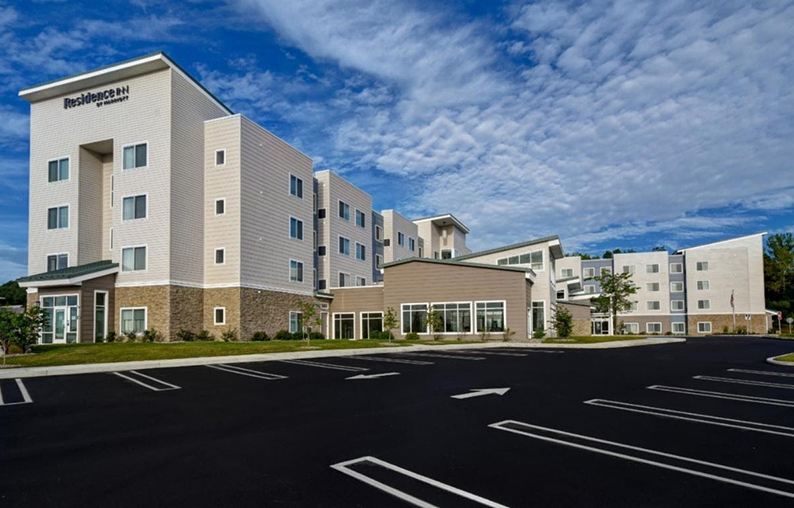News:
Finance
Posted: April 11, 2008
The state of the commercial real estate market: Observing recent trends and analyzing surveys
In the current real estate market, commercial banks are the one source of debt capital continuing to originate commercial real estate loans. The source and the cost of their funding have kept these banks in the market - customer deposits have been extremely stable and relatively unaffected by the whims of the capital markets and the cost of customer deposits has decreased due to the Federal Reserve's initiative to jumpstart the economy. Banks have also stayed active in the commercial mortgage market because of the strong interest margins they receive on loans and because there are few lending alternatives for the funds they offer.
A key question is, will the banks' commercial mortgage portfolios perform well throughout the year, or are they poised to experience a meltdown similar to residential mortgages? Observing recent trends in commercial mortgage portfolios and analyzing recent market surveys will help provide some insight.
FDIC statistics indicate that commercial real estate loans comprise approximately 14% of total loans on a bank's balance sheet. Additional data from the Federal Reserve show that the delinquency rates on these commercial real estate loans have increased in each of the seven most recent quarters, leading to a rate of 2.71% in the 4th quarter, 2007. These delinquent commercial real estate loans include construction and land development loans, loans secured by multifamily residences, as well as loans arranged for non-farm, non-residential real estate.
The fact that charge-offs are expected to increase from their recent low levels provides another indication of a weakening market. More and more loans are being written off as uncollectible from borrowers. According to the FDIC, net commercial real estate charge-offs jumped five basis points to 0.09% in 2007 and are projected to continue increasing in coming months. The median 52-quarter charge-off rate is 0.06%.
In response to the gradual increase in delinquencies and worsening market conditions, commercial banks have tightened their lending standards. This observation is supported by the January 2008 Senior Loan Officer Survey, a questionnaire given to loan officers at domestic and foreign banks to measure opinions on bank lending practices. Approximately 80% of domestic banks reported tightened lending standards on commercial real estate loans over the past three months, a notable increase from the October survey. The percent of domestic banks reporting tighter lending standards on commercial real estate loans was the highest since the question was introduced in the 1990 survey.
There were several measures in the latest Senior Loan Officer Survey that indicate tightened lending standards in today's market. Approximately 55% of domestic respondents and 45% of foreign respondents noted that they required higher debt service coverage ratios and lower loan-to-value ratios on commercial real estate loans in 2007. In addition, about 40% of domestic banks and 50% of foreign banks indicated that they reduced the maximum loan sizes they were willing to grant over the past twelve months. Approximately 45% of domestic banks and 75% of foreign banks reported raising loan rate spreads over their cost of funds in 2007.
According to the survey, the tightened terms for commercial real estate loans are a result of the worsened credit conditions in the commercial real estate market.
Despite the tightened loan standards and weakening commercial real estate market, it is unlikely we will experience an extreme commercial real estate bust. While the .09% commercial real estate charge-off rate and the 2.71% real estate loan delinquency rate may seem high, these numbers must be put in perspective. For the commercial real estate market to be considered a subprime market, the charge-off rate would need to be greater than 20%. Also, in the early 1990s, the delinquency rate for commercial real estate loans peaked at 12%. At this time, no one predicts that the rate will come close to the levels it reached two decades ago.
There are some similarities between what we are experiencing today and the situation in the early 1990s, but the downturn will not be as extreme because of the lessons we learned during that time. The recent slump will make it more difficult to secure loans from commercial banks, but it will have little impact on most banks' balance sheets. This means the commercial real estate market will be protected from experiencing a detrimental downturn or a meltdown similar to the residential mortgage market.
Daniel Lisser is managing director of Johnson Capital, New York, N.Y.
Tags:
Finance
MORE FROM Finance
Affinius Capital and Kennedy Wilson provide $78 million and $306 million loan to develop Harborside 8
Jersey City, NJ Affinius Capital and Kennedy Wilson closed on the financing for the ground-up development of Harborside 8, a multifamily project located on the waterfront. The capitalization includes $78

Quick Hits






.jpg)


.jpg)